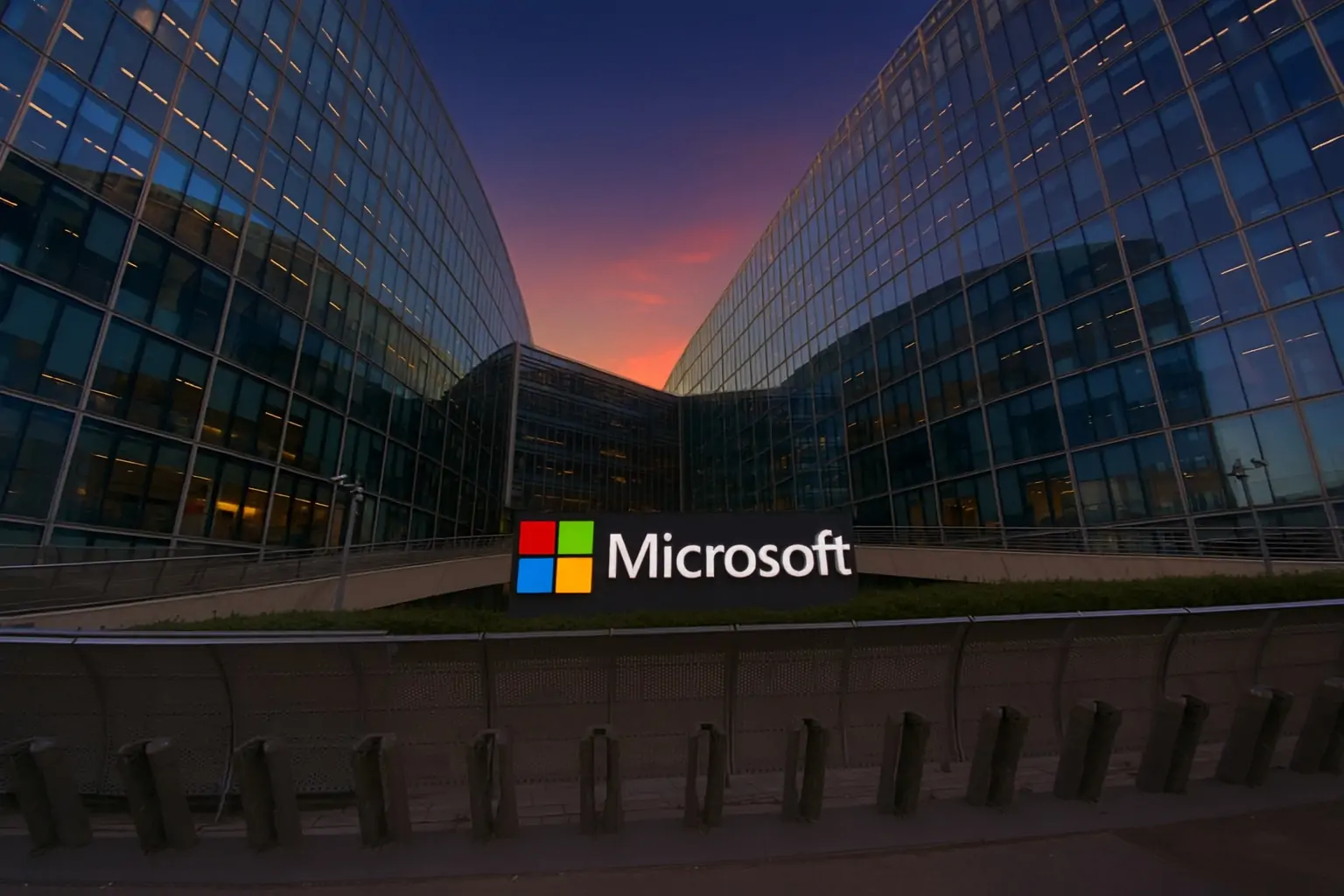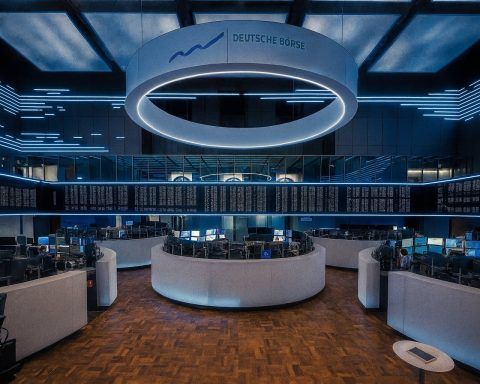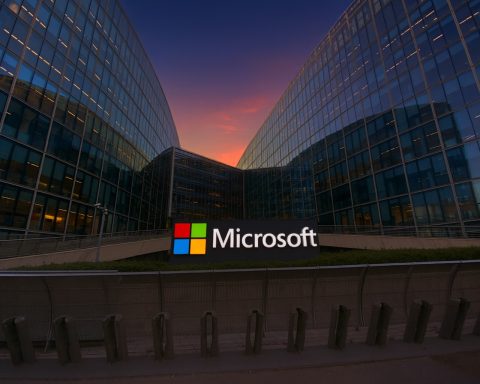Microsoft shares head into Wednesday’s U.S. session at the heart of the global “AI trade” – and right now, that trade is under pressure. In just the last 24 hours, the stock has been hit by a high‑profile analyst downgrade, a massive new AI partnership with Anthropic, fresh EU regulatory scrutiny of Azure, and a flood of product news from the Ignite 2025 conference. Microsoft+4TechStock²+4Reuters+4
Here’s a clear, news‑driven rundown of what matters for MSFT before the opening bell on November 19, 2025.
1. Microsoft stock today: price action and pre‑market snapshot
Where MSFT closed on Tuesday (Nov. 18, 2025)
- Close: $493.79
- Move: ‑2.7% on the day
- Intraday range: roughly $486.8 – $503
- 52‑week range: about $344.79 – $555.45
- Distance from 52‑week high: ~11% below the July 31 peak around $555.45 [1]
The drop pulled Microsoft below both its 50‑day (~$514) and 200‑day (~$498) moving averages, signaling that near‑term momentum has shifted toward sellers. TechStock²
Pre‑market indication (early U.S. hours, Nov. 19)
- MarketWatch’s pre‑market quote around 4:30 a.m. EST showed MSFT near $493.4, essentially flat versus Tuesday’s close. [2]
- A later update around 6:11 a.m. EST had the stock trading near $494.5, up roughly 0.15% in light volume – still hovering in the mid‑$490s. [3]
Snapshot of the fundamentals at this price level
Market data from multiple platforms shows Microsoft at roughly: [4]
- Market cap: about $3.7 trillion
- P/E ratio: mid‑30s (around 35x trailing earnings)
- PEG ratio: near 2.3
- Balance sheet: low leverage (debt‑to‑equity ~0.12) and strong liquidity (current and quick ratios both ~1.35)
In other words, Microsoft is still priced as a premium AI and cloud leader – which is exactly why any wobble in the AI story is hitting the stock so hard.
2. The Redburn downgrade: AI economics under the microscope
The single clearest catalyst for Tuesday’s sell‑off was a downgrade from Rothschild & Co Redburn analyst Alexander Haissl. [5]
What the downgrade said
- Rating cut: From Buy (or Strong Buy in some datasets) to Neutral/Hold. [6]
- Price target cut: From about $560 to $500, roughly an 11% reduction, leaving the new target only slightly above where MSFT now trades. TechStock²+2FX Leaders+2
- Key concern: the economics of generative AI. Haissl argues that:
- Gen‑AI workloads are significantly more capital‑intensive than earlier cloud services.
- Infrastructure often has to be depreciated over 5–6 years instead of 3.
- Pricing power may be weaker as more open‑source and multi‑cloud options appear. TechStock²+2Morningstar+2
A related MarketWatch/Morningstar write‑up framed it more bluntly: AI’s “destructive economics” could mean hyperscalers like Microsoft and Amazon end up spending far more on GPUs and data centers than they earn in incremental profit if pricing doesn’t keep up. [7]
Market reaction
- Nasdaq’s market wrap highlighted that Microsoft and Amazon both fell more than 2% after the downgrade, dragging major tech indexes lower. [8]
- Global indices from Europe to North America saw AI‑heavy sectors underperform amid growing “AI bubble” chatter. TechStock²+2Bloomberg+2
The takeaway for today: the narrative has shifted from “AI is all upside” to “show me the returns.” Traders will be watching whether buyers step back in near the $490 area or whether concerns about AI capex keep pressure on the stock.
3. Wall Street isn’t abandoning Microsoft: Guggenheim reaffirms a $675 target
The downgrade isn’t the whole story. Just hours ago, Guggenheim reiterated its Buy rating on Microsoft and maintained a $675 price target following the Ignite conference. [9]
Key points from Guggenheim’s note:
- The $675 target implies almost 37% upside from prices around $494. [10]
- The firm came away from Ignite convinced that Microsoft is building the platform on which enterprises can “industrialize AI”, not just sprinkle isolated AI features into existing apps. [11]
- They highlight Microsoft’s theme of “AI in the flow of human ambition” – AI copilots and agents woven directly into everyday work tools like Microsoft 365, Dynamics and Windows, grounded in enterprise data and wrapped in governance. [12]
Broadly, Street sentiment is still constructive:
- MarketBeat data shows dozens of Buy ratings vs only a few Holds, with an average 12‑month target around $632. [13]
- A fresh Zacks/Nasdaq research note this week pointed to 40% Azure growth, strong Copilot demand, and a commercial remaining performance obligation (RPO) of ~$392 billion as reasons many analysts still treat MSFT as a core AI holding. TechStock²+2Nasdaq+2
So while Redburn has raised a red flag on AI returns, the consensus view still sees Microsoft as one of the best‑positioned beneficiaries of enterprise AI.
4. The Anthropic mega‑deal: AI firepower and bubble fears
Another major headline for Microsoft this week is its multi‑billion‑dollar alliance with Anthropic and Nvidia. [14]
What was announced
According to Reuters and other outlets: [15]
- Anthropic – maker of the Claude family of large language models – will commit $30 billion to purchase Azure cloud capacity, including up to 1 gigawatt of AI compute based on Nvidia’s next‑generation chips.
- Nvidia will invest up to $10 billion in Anthropic, and Microsoft up to $5 billion, as part of the startup’s next funding round.
- Anthropic’s latest Claude models will be available through Azure AI Foundry, making Claude the only “frontier” model family available across all three major clouds (AWS, Google Cloud and Azure).
- Microsoft CEO Satya Nadella emphasized that OpenAI “remains a critical partner,” but that Microsoft no longer wants to rely on a single frontier‑model provider. [16]
Different reports put Anthropic’s implied valuation somewhere north of $180 billion and potentially much higher, reflecting how aggressively investors are pricing generative‑AI leaders. [17]
Why it matters for MSFT stock
Positives:
- Deepens Azure’s position as a top‑tier AI infrastructure platform, with access to both OpenAI and Anthropic models.
- Drives long‑term cloud revenue visibility via Anthropic’s $30B compute commitment.
- Helps reduce concentration risk from relying too heavily on OpenAI alone, while still leveraging that partnership. [18]
Risks and market worries:
- The deal reinforces concerns that the AI industry is leaning into circular mega‑deals – big cloud commitments and equity stakes that inflate revenue on both sides but may not yet be matched by end‑customer demand. [19]
- Investors already uneasy about AI valuations see another multi‑billion‑dollar bet as possible evidence of an AI infrastructure bubble, especially when set against Redburn’s warning on AI economics. [20]
For today’s session, expect the Anthropic story to cut both ways: it strengthens the long‑term AI case, but also underscores just how much capital Microsoft is committing to this race.
5. Ignite 2025: Agent 365, Windows AI and the “agentic” future
Ignite 2025 in San Francisco is the backdrop for much of this week’s Microsoft news. This year’s conference is heavily focused on AI agents – semi‑autonomous pieces of software that can take actions on behalf of users – and on building what Microsoft describes as a full “AI lifecycle” stack for enterprises. [21]
Here are some of the most stock‑relevant announcements from November 18–19:
Agent 365: a control plane for enterprise AI agents
- Agent 365 is a new control plane designed to discover, govern and secure AI agents across an organization – not only those running on Microsoft platforms, but also third‑party agents. [22]
- Microsoft projects that 1.3 billion agents could be running in workplaces by 2028 and is positioning Agent 365 as the central place to manage them. TechStock²
- The product integrates with Microsoft 365 Copilot and a new telemetry layer dubbed Work IQ, which helps customers track agent usage and ROI across workflows. [23]
Investor angle: Agent 365 pushes Microsoft further up the stack from “just” selling compute into selling governance, orchestration and analytics around AI, which could support premium pricing and deeper lock‑in.
Windows 11 as a “canvas for AI”
New Windows announcements out of Ignite emphasize Copilot‑centric experiences: [24]
- An expanded Copilot entry point on the taskbar, with one‑click and voice access.
- The ability to monitor and control agents directly from Windows, including their status and activity.
- Features like semantic search across local and cloud files, and “send what’s on screen to Copilot” style workflows.
This recasts Windows as a front‑end for agentic AI systems rather than just a traditional desktop OS, which reinforces Microsoft’s strategy of weaving AI into every layer of its ecosystem.
Sector‑specific agents and Fabric data innovations
- New data agents in Microsoft Fabric aim to provide deeper reasoning over enterprise data and smoother interoperability between models and data pipelines. [25]
- A healthcare‑focused Ignite post describes agentic AI scenarios in hospitals and clinics, from triage to documentation, built on Azure and Teams. [26]
Overall, Ignite 2025 communicates a clear strategic message: Microsoft wants to own not just the models and the cloud, but the full lifecycle of enterprise AI – from infrastructure to agents to governance. That’s bullish for the long term, but it amplifies the question: how quickly will customers pay for all of this?
6. EU cloud crackdown: Azure faces DMA and DORA scrutiny
On November 18, the European Commission added a new regulatory overhang for Microsoft’s cloud business: [27]
Digital Markets Act (DMA) investigations
- Brussels launched three market investigations under the Digital Markets Act focused squarely on Microsoft Azure and Amazon Web Services.
- Two of these will examine whether Azure and AWS should be designated “gatekeepers” in cloud computing, even though they currently fall short of the DMA’s usual quantitative thresholds.
- A third will assess whether existing DMA rules adequately address potential tying, bundling, interoperability barriers and unfair contract terms in cloud markets. [28]
If Azure is ultimately labelled a gatekeeper, Microsoft would face: [29]
- Stricter obligations on interoperability and data access.
- Tougher limits on self‑preferencing its own services.
- The risk of fines up to 10% of global annual revenue for serious violations.
DORA: “critical” provider for Europe’s financial system
On the same day, EU authorities also designated Microsoft a “critical” third‑party technology provider to financial institutions under the Digital Operational Resilience Act (DORA), giving regulators more direct oversight of how outages and cyber‑risk are managed. [30]
What this means for the stock today
None of these investigations immediately change Microsoft’s earnings guidance. But they:
- Increase regulatory risk around one of Microsoft’s most profitable engines, Azure.
- Signal that cloud concentration and AI infrastructure are becoming core policy concerns in Europe.
Combined with AI capex worries, this helps explain why some investors are demanding a higher risk premium on MSFT.
7. Earnings backdrop: strong fundamentals, heavy AI spending
All of this is happening just weeks after Microsoft reported a blowout fiscal Q1 2026 (quarter ended Sept. 30, 2025): [31]
Headline numbers
- Revenue: $77.7 billion, up 18% year‑over‑year.
- Operating income: $38.0 billion, up 24%.
- GAAP net income: $27.7 billion (+12%).
- Non‑GAAP net income: $30.8 billion (+22%), excluding a $3.1B OpenAI‑related loss.
- GAAP EPS: $3.72 (+13%).
- Non‑GAAP EPS: $4.13 (+23%), beating consensus estimates.
- Microsoft Cloud revenue: $49.1 billion (+26%).
- Azure and other cloud services: ~40% growth, well ahead of expectations.
The company also returned $10.7 billion to shareholders in the quarter via dividends and buybacks. [32]
The controversy: AI capex
Where investors flinched was the spending:
- Capital expenditures hit $34.9 billion in the quarter, largely driven by GPUs and CPUs for AI and cloud. About half of this spend is in “short‑lived” assets (chips), with the rest in long‑lived data‑center infrastructure. [33]
- Management signaled that capex will accelerate further through FY26 as Microsoft races to keep up with AI demand and a swelling RPO backlog. [34]
- Guidance calls for flat operating margins year‑over‑year, implying that for now, much of the AI upside is being plowed back into infrastructure rather than dropping straight to the bottom line. [35]
Put differently: the fundamentals look excellent, but the spending is enormous. Redburn’s downgrade and the Anthropic deal are landing on top of an already‑heated debate about how quickly those billions in AI investment will pay off.
8. Flows, positioning and insider activity
Recent filings and news flow show a mixed picture of how big money is positioning around Microsoft: [36]
- Some institutional investors, like North Point Portfolio Managers, have trimmed their MSFT stakes, taking profits after a strong multi‑year run.
- Others, including Family Capital Trust Co. and several smaller asset managers, have added to positions, citing Microsoft’s cloud dominance and AI leadership.
- MarketBeat data shows institutions owning roughly 70–75% of the float, a high but typical level for a mega‑cap tech name. [37]
- Earlier this fiscal year, CEO Satya Nadella and President Brad Smith disclosed sizable stock sales, though both still retain substantial holdings. These transactions were conducted at higher share prices (around the low‑to‑mid $500s) and framed as portfolio diversification. [38]
For day‑to‑day trading, the more immediate factor is short‑term technical positioning: the break below key moving averages and a widely watched long‑term trendline has drawn in both dip‑buyers and short‑term bears. TechStock²
9. What MSFT investors should watch as trading opens
Here are the main storylines likely to drive Microsoft’s stock today, November 19, 2025:
- Pre‑market and early‑session price action
- Does MSFT stabilize around the $490–$495 zone after Tuesday’s sell‑off, or do sellers push it toward key technical support levels flagged by traders in the mid‑$470s–$480s? TechStock²+1
- How the market digests the Redburn vs. Guggenheim split
- Watch commentary and flows as traders weigh Redburn’s AI ROI worries against Guggenheim’s and others’ long‑term AI growth thesis and high price targets. [39]
- Reaction to the Anthropic/Nvidia alliance
- Expect ongoing discussion of whether the $30B Azure commitment and up to $15B of combined MSFT/NVDA investment are smart strategic moves or signs of AI capex overheating. [40]
- Nvidia earnings and the broader AI “risk‑off” mood
- Nvidia reports after the close today, and both Bloomberg and other market watchers expect its commentary on AI spending to set the tone for AI‑related stocks, Microsoft included. [41]
- Any new signals from Brussels on cloud regulation
- While DMA and DORA processes will unfold over months, any fresh remarks from EU officials about Azure’s potential gatekeeper status could move sentiment, especially in European trading hours. [42]
- Ignite 2025 follow‑through
- Investors will be looking for customer case studies, pricing details and early demand signals for Agent 365, Copilot expansions, and Fabric data agents, all of which will shape how quickly these announcements can show up in revenue and margins. [43]
10. Bottom line
Going into today’s session, Microsoft sits at the center of three overlapping debates:
- AI returns vs. AI spending – Can Microsoft translate enormous AI investments into earnings growth fast enough to justify a mid‑30s P/E?
- Regulation vs. scale – Will EU scrutiny of Azure and financial‑sector dependence on Big Tech cloud providers meaningfully constrain how Microsoft monetizes its dominance?
- Hype vs. durability – Is the Anthropic mega‑deal and Ignite’s deluge of AI announcements the foundation of a durable new profit cycle, or another sign of a frothy AI boom?
For now, the company’s fundamentals remain strong: high‑teens revenue growth, 40% Azure growth, and a record cloud backlog. But with the stock priced as a premier AI bellwether, sentiment around AI economics and regulation can move MSFT sharply in either direction – even on otherwise quiet days. [44]
Disclaimer: This article is for informational and journalistic purposes only and does not constitute investment advice. It does not take into account your individual objectives, financial situation, or risk tolerance. Always do your own research and consider consulting a licensed financial adviser before making investment decisions.
References
1. markets.ft.com, 2. www.marketwatch.com, 3. www.marketwatch.com, 4. www.marketbeat.com, 5. www.investing.com, 6. www.marketbeat.com, 7. www.marketwatch.com, 8. www.nasdaq.com, 9. www.investing.com, 10. www.investing.com, 11. www.investing.com, 12. www.microsoft.com, 13. www.marketbeat.com, 14. www.reuters.com, 15. www.reuters.com, 16. www.reuters.com, 17. www.reuters.com, 18. www.reuters.com, 19. www.reuters.com, 20. www.reuters.com, 21. www.microsoft.com, 22. www.reuters.com, 23. www.encloud9.com, 24. blogs.windows.com, 25. blog.fabric.microsoft.com, 26. www.microsoft.com, 27. apnews.com, 28. cincodias.elpais.com, 29. en.wikipedia.org, 30. www.reuters.com, 31. www.stocktitan.net, 32. www.stocktitan.net, 33. www.microsoft.com, 34. www.microsoft.com, 35. www.microsoft.com, 36. www.marketbeat.com, 37. www.stocktitan.net, 38. www.marketbeat.com, 39. www.investing.com, 40. www.reuters.com, 41. www.bloomberg.com, 42. www.reuters.com, 43. www.reuters.com, 44. www.stocktitan.net










